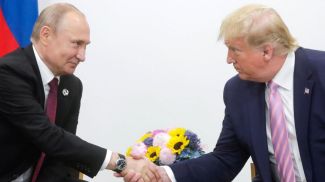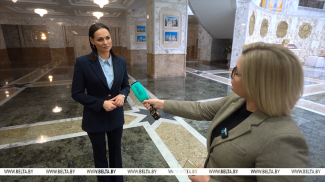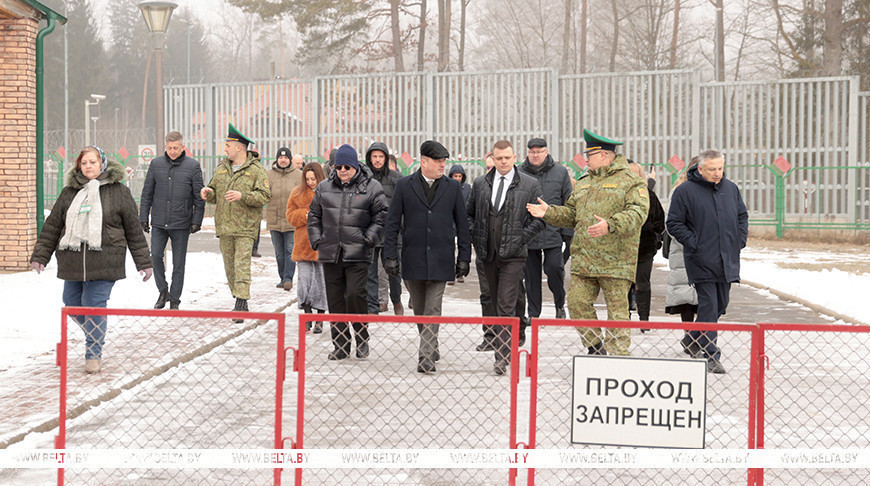
KAMENETS DISTRICT, 25 February (BelTA) -Representatives of international organizations toured the Belovezhskaya Pushcha National Park during their visit to Brest Oblast. The delegation made one of the stops near the fence that Poland built on the border, BelTA learned.
The international delegation includes representatives of the UN, UNDP, and WHO. They were accompanied by Sergei Khomenko, National Coordinator for Sustainable Development Goals, Deputy Chairman of the Council of the Republic, and Igor Brilevich, Chairman of the Brest Oblast Council of Deputies, member of the Council of the Republic. The program was quite packed. The day before the guests visited educational, healthcare and cultural institutions, sports facilities in Baranovichi District, Kobrin District and Kamenets District. In the morning of 25 February the guests went to the Belovezhskaya Pushcha National Park and made stops at the Pererov checkpoint and the Polish fence that divided the forest into two parts.
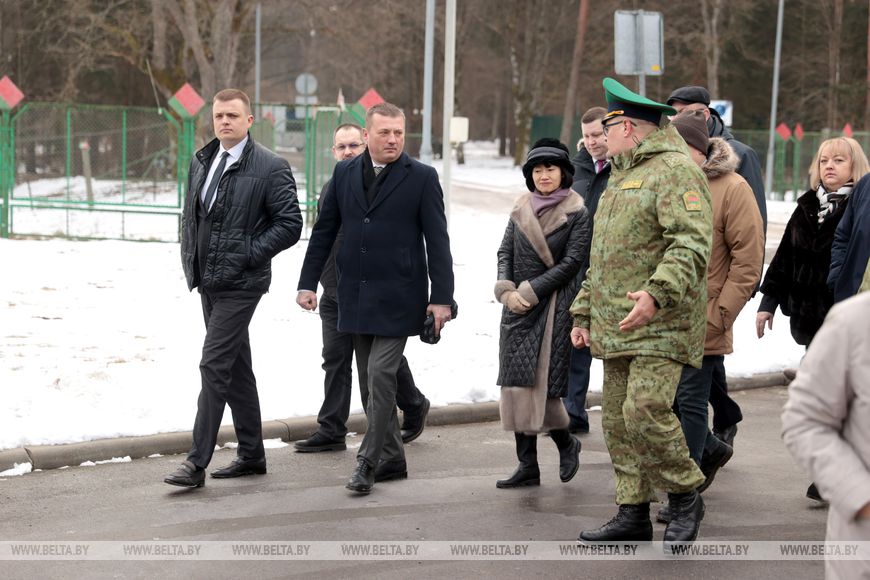
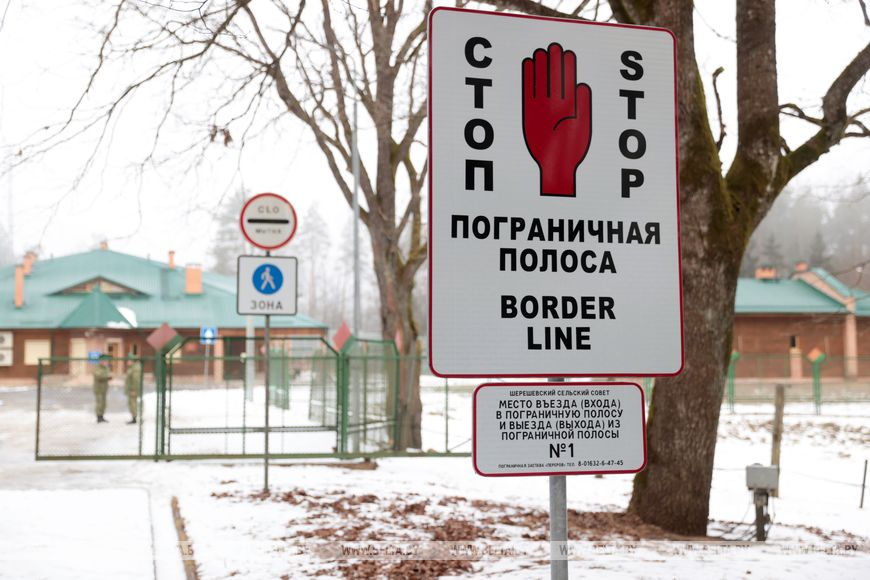
"Pererov was the first checkpoint that foreigners traveling to Belarus could cross without visas. Thus, foreign nationals could take advantage of the simplified border crossing procedure to visit the Belarusian part of the Belovezhskaya Pushcha. This was popular with pedestrians and cyclists. Foreign nationals came from across the globe: not only from the European Union, but also from quite distant countries, such as New Zealand, Australia, Ecuador, Canada and many others. The route was very popular. The checkpoint was capable of handling up to 400 people per day. About the same number of people crossed it during the season. Unfortunately, at the initiative of the Polish side this was discontinued in the wake of the pandemic in March 2020; traffic has not resumed despite the proposals of the Belarusian side," noted the official representative of the Brest Border Group Sergei Dmitriyev.
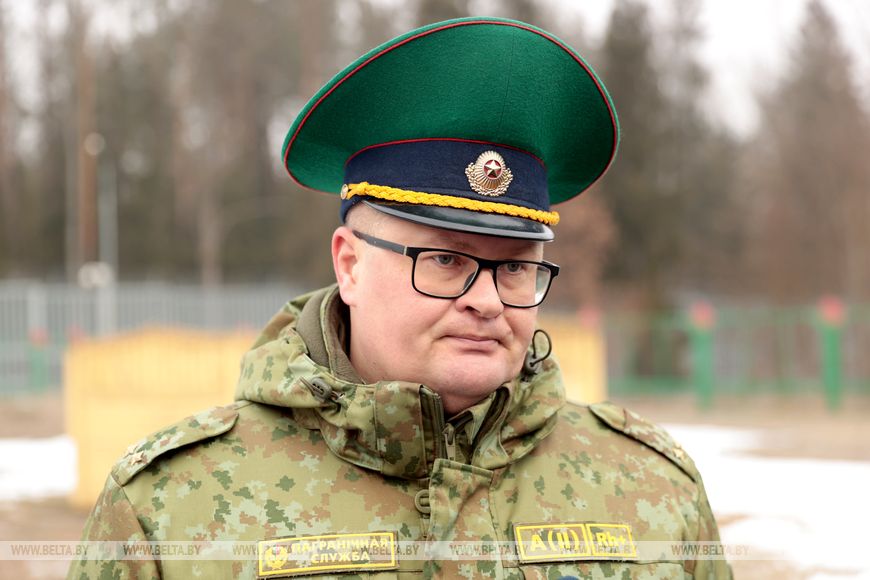
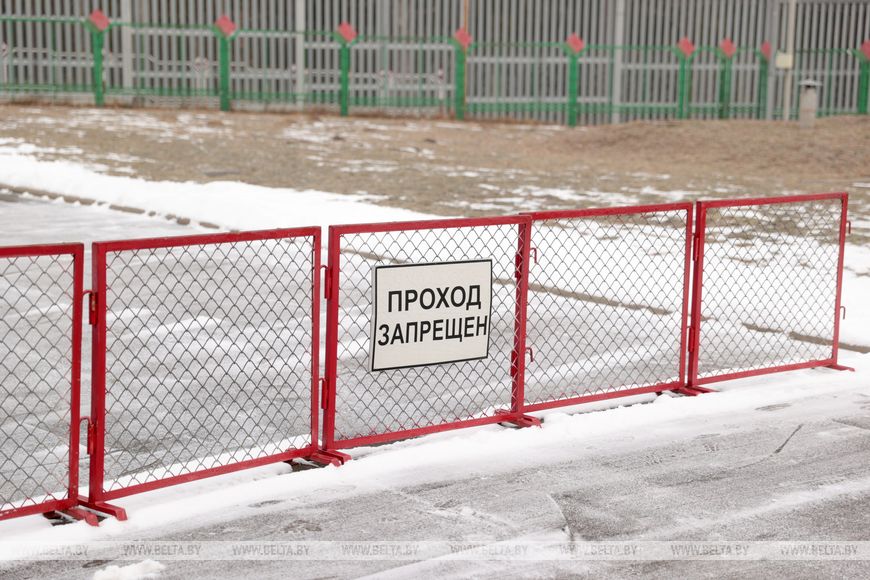
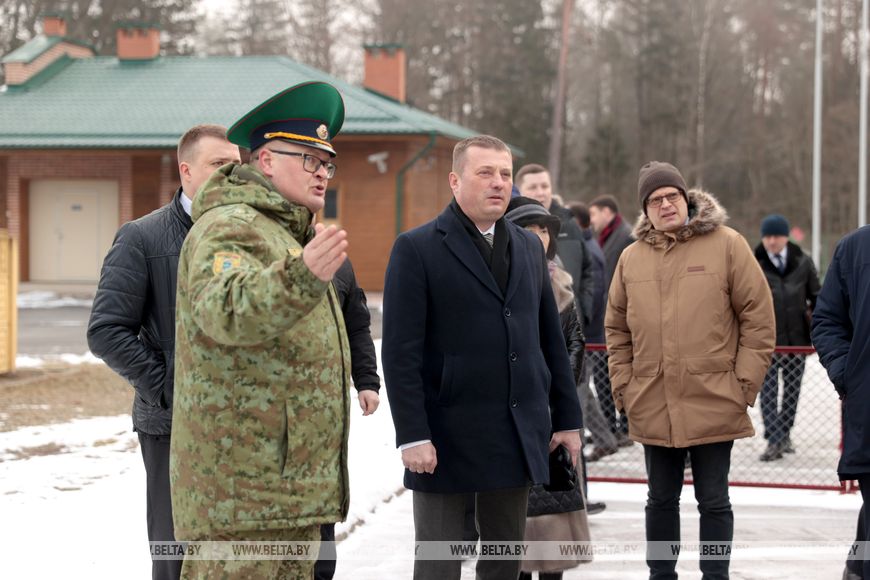





The international delegation includes representatives of the UN, UNDP, and WHO. They were accompanied by Sergei Khomenko, National Coordinator for Sustainable Development Goals, Deputy Chairman of the Council of the Republic, and Igor Brilevich, Chairman of the Brest Oblast Council of Deputies, member of the Council of the Republic. The program was quite packed. The day before the guests visited educational, healthcare and cultural institutions, sports facilities in Baranovichi District, Kobrin District and Kamenets District. In the morning of 25 February the guests went to the Belovezhskaya Pushcha National Park and made stops at the Pererov checkpoint and the Polish fence that divided the forest into two parts.


"Pererov was the first checkpoint that foreigners traveling to Belarus could cross without visas. Thus, foreign nationals could take advantage of the simplified border crossing procedure to visit the Belarusian part of the Belovezhskaya Pushcha. This was popular with pedestrians and cyclists. Foreign nationals came from across the globe: not only from the European Union, but also from quite distant countries, such as New Zealand, Australia, Ecuador, Canada and many others. The route was very popular. The checkpoint was capable of handling up to 400 people per day. About the same number of people crossed it during the season. Unfortunately, at the initiative of the Polish side this was discontinued in the wake of the pandemic in March 2020; traffic has not resumed despite the proposals of the Belarusian side," noted the official representative of the Brest Border Group Sergei Dmitriyev.


He added that only one passenger checkpoint – Brest - is currently operating along the entire length of the Belarus-Poland border. “With Poland showing its readiness, we would be glad to reopen other checkpoints, which would enable foreigners to visit our country and see our hospitality. This is the position we wanted to convey to representatives of international organizations today, to emphasize Belarus’ openness and readiness to meet the proposals of the neighboring state,” Sergei Dmitriyev said.


One of the representatives of international organizations noted that earlier people talked about the iron curtain erected by the USSR. He called the Polish fence a true iron curtain. It caused tangible damage to the relic forest of Belovezhskaya Pushcha and its inhabitants. “The changes occurred simultaneously with the construction works. Building the road and the fence, the Poles cut down a section of the forest, thus disturbing the soil cover. The road created an artificial dam, which blocked surface water movement and disturbed the hydrological regime. The wildlife gene pool is expected to deteriorate, as the fence creates a barrier and blocks their migration. Besides, the road became a bridge for introducing a large number of invasive species into Belovezhskaya Pushcha,” said Vyacheslav Kravchuk, Head of the Scientific Department of the Belovezhskaya Pushcha National Park. Vehicles coming to the border brought seeds of “aliens” on their wheels. Among them are Canadian goldenrod, small balsam and other species.



A little more than twenty gates for wild animals have been built along the Polish fence. However, the animals do not use them. They continue to follow the routes they established years ago.
“We have repeatedly appealed to the UNESCO World Heritage Center and asked them to take measures and somehow influence the Polish side, the Polish government. Last April a joint IUCN/UNESCO mission visited Belovezhskaya Pushcha. The specialists prepared a report on the negative impact of the fence and gave about 15 recommendations, almost all of which were sent to the Polish side. They set various requirements to reduce the negative impact of this fence,” Vyacheslav Kravchuk said.
The specialists' recommendations were approved at the session of the UNESCO World Heritage Committee, which took place in New Delhi last year. Belarus is looking forward to seeing what actions the Polish side will take. “Every year we need to submit a report on the preservation of the site to the World Heritage Center. Belarus has already submitted the report, but we don't know about the Polish report yet. We have not seen what they wrote there,” he summarized.







